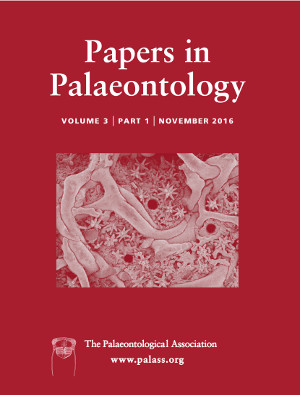Reg. Charity No. 1168330

A previously undocumented diversity of Cambrian palaeoscolecids is described from localities in Sweden, Norway and Denmark. The material described here includes isolated sclerites as well as the first macroscopic specimens reported from the palaeocontinent Baltica. The sclerites are all of early middle Cambrian age (Ptychagnostus gibbus Biozone) and are assigned to at least four new species of Hadimopanella, two of which are formally introduced: H. incubo sp. nov. and H. oelandiana sp. nov. The two macroscopic specimens are of late early Cambrian (Ellipsocephalus lunatus Biozone) and early middle Cambrian age (Acadoparadoxides oelandicus Biozone), respectively. The early Cambrian specimen is described as Maotianshania? sp. and comprises an incomplete annulated trunk fragment which is uniformly covered with circular sclerites, indicative of the palaeoscolecid family Maotianshaniidae. This is the first record of this family outside China. The middle Cambrian specimen is almost complete and introduced as Wronascolex? johanssoni sp. nov. It is characterized by a previously undocumented distribution of its Hadimopanella‐like sclerites which increase in size and change ornamentation from the anterior to the posterior end of the distinctly annulated trunk. The observed distribution pattern can explain the high variability of species of the sclerite‐based genus Hadimopanella as well as the occurrence of rare morphotypes of Hadimopanella in otherwise rich samples. Available data on the ontogeny of palaeoscolecids regarding the relationship between body and sclerite size of a taxon are evaluated. It is concluded that sclerite size might be species specific and should be considered when comparing taxa with morphological similar sclerites.